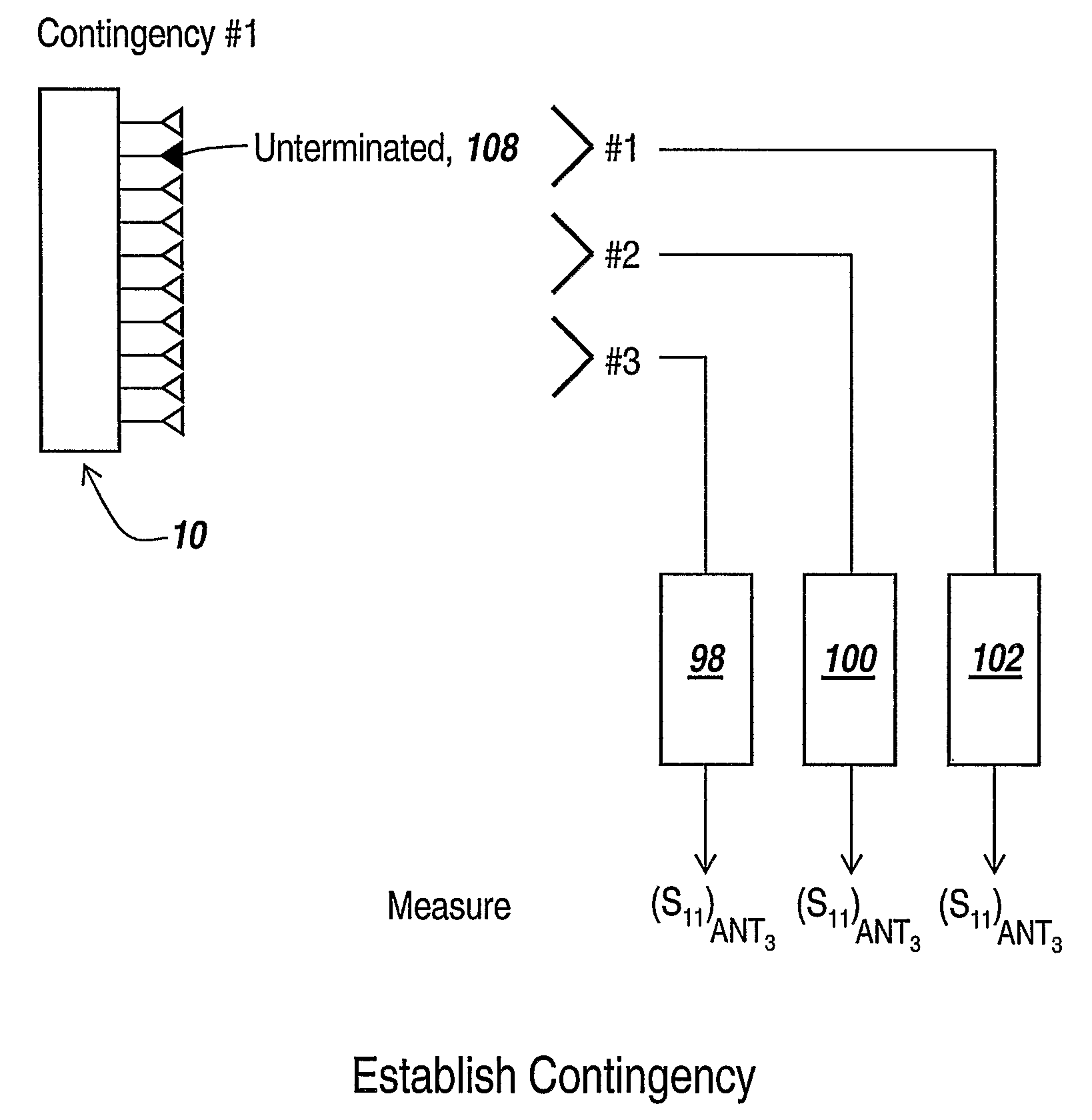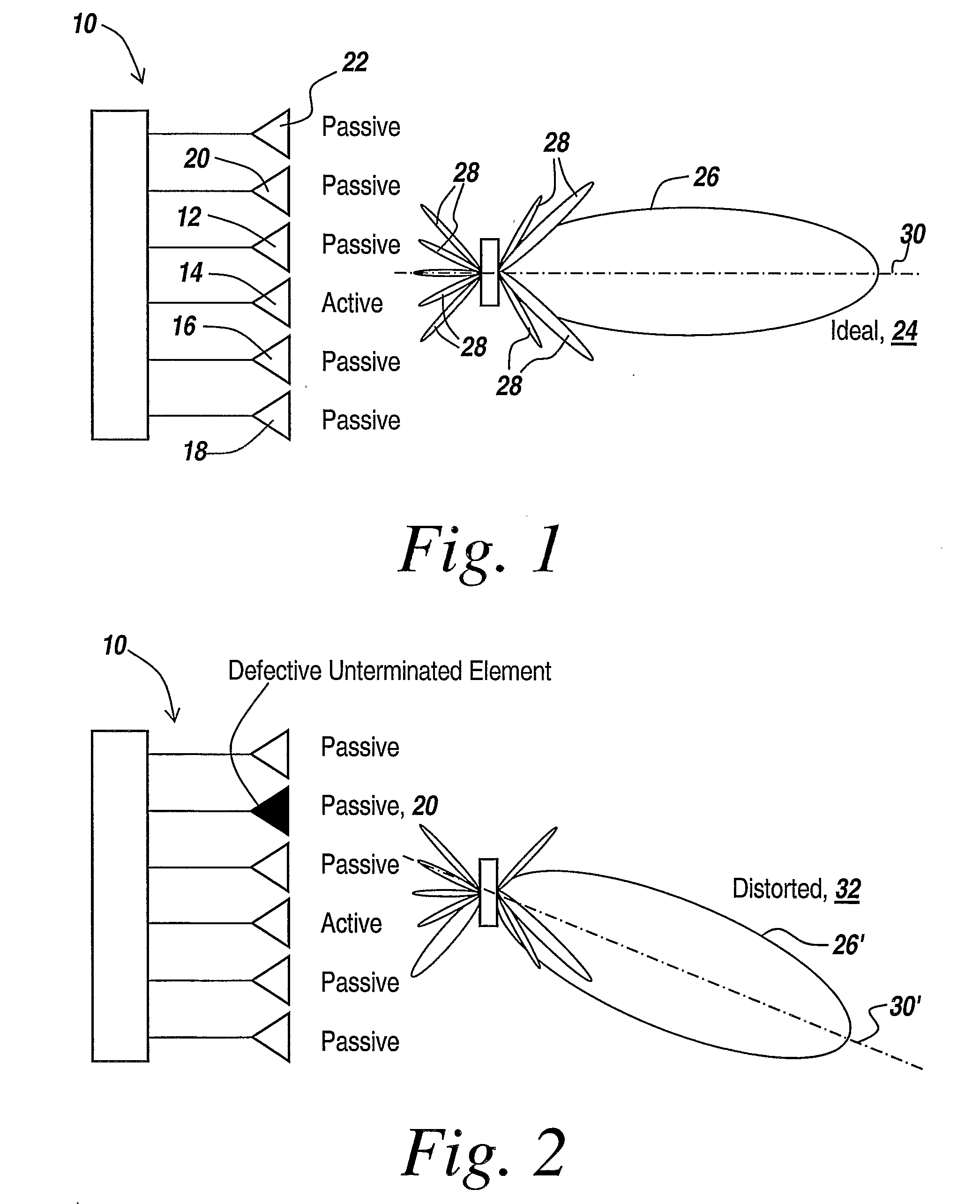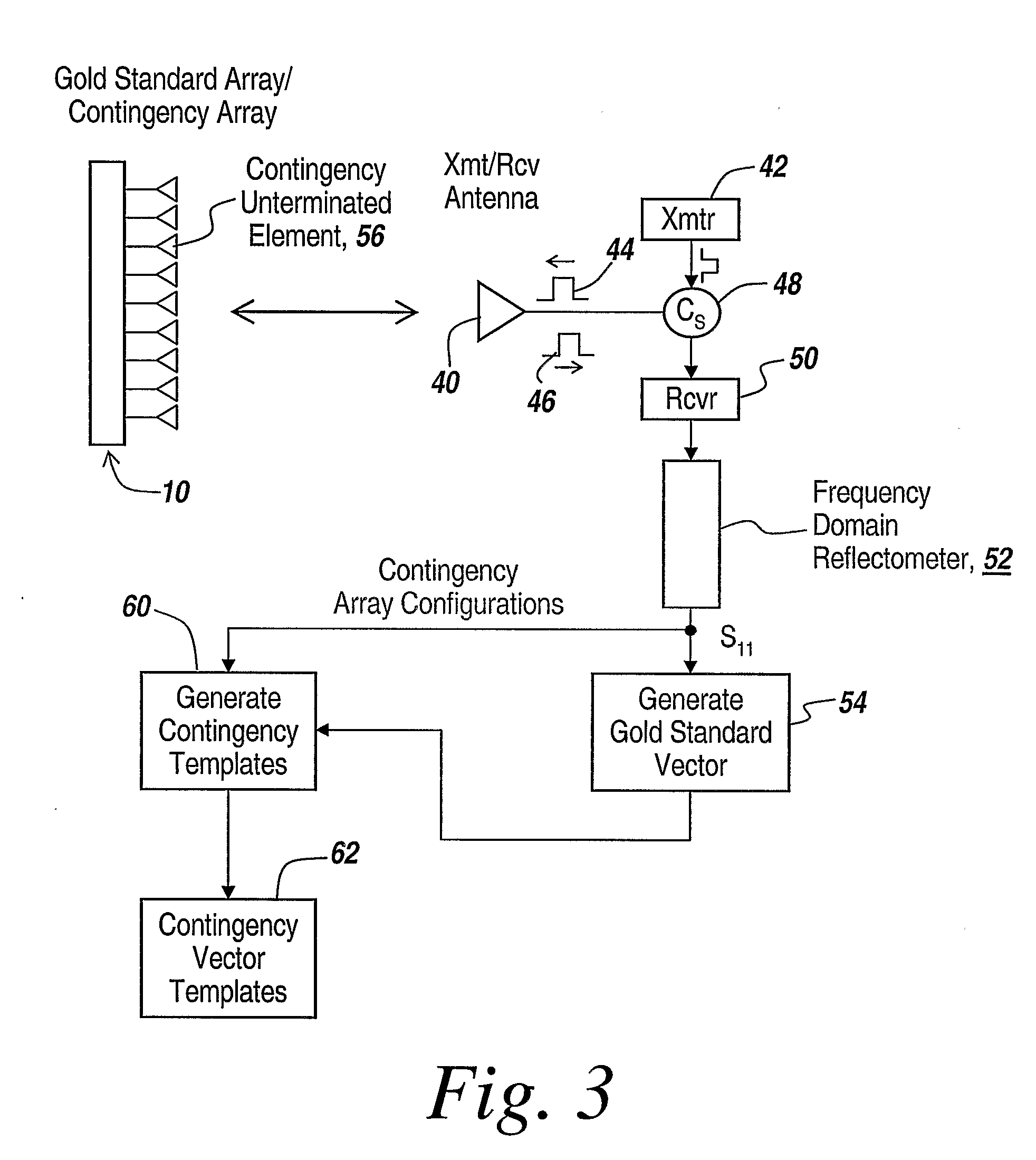Method for Detection of Faulty Antenna Array Elements
a technology of antenna array elements and antenna arrays, applied in the direction of antennas, instruments, antenna radiation diagrams, etc., can solve problems such as antenna pattern distortion, and achieve the effects of eliminating reflection coefficient signals, reducing reflections from artifacts, and effectively isolating
- Summary
- Abstract
- Description
- Claims
- Application Information
AI Technical Summary
Benefits of technology
Problems solved by technology
Method used
Image
Examples
Embodiment Construction
[0044] Referring now to FIG. 1, in order to test a multi-element antenna array 10 having an active element 12 and passive elements 14, 16, 18, 20 and 22, the ideal antenna array, hereinafter called the gold standard, produces an ideal antenna pattern 24 having a major lobe 26 and various side lobes 28, all symmetrical about the center line 30 of the array.
[0045] This ideal antenna pattern permits direction-finding applications in which the direction of incoming signals is determined through the directionality of the antenna array.
[0046] However, as illustrated in FIG. 2, assuming that antenna array 10 has a defective passive element 20 due to the fact, for instance, that the element is unterminated and therefore does not absorb incoming radiation, the entire array will have a distorted antenna pattern, here illustrated at 32, in which at the very least the axis of the major lobe 26′, namely axis 30′, is considerably altered with respect to the ideal axis as illustrated in FIG. 1. ...
PUM
 Login to View More
Login to View More Abstract
Description
Claims
Application Information
 Login to View More
Login to View More - R&D
- Intellectual Property
- Life Sciences
- Materials
- Tech Scout
- Unparalleled Data Quality
- Higher Quality Content
- 60% Fewer Hallucinations
Browse by: Latest US Patents, China's latest patents, Technical Efficacy Thesaurus, Application Domain, Technology Topic, Popular Technical Reports.
© 2025 PatSnap. All rights reserved.Legal|Privacy policy|Modern Slavery Act Transparency Statement|Sitemap|About US| Contact US: help@patsnap.com



